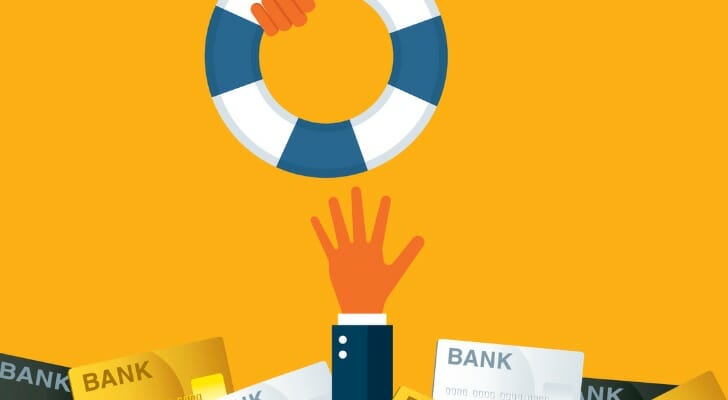Great news! The Small Business Administration (SBA) has reopened the Economic Injury Disaster Loan (EIDL) program to all small businesses affected by the coronavirus pandemic.
Long before the coronavirus business interruption, the EIDL program was providing financial support to small businesses and private non-profit organizations that encountered certain declared disasters. But the Coronavirus Aid, Relief, and Economic Security (CARES) Act expanded the program to make it easier for borrowers affected by COVID-19 fallout to get a loan – and the interim stimulus bill replenished the program’s depleted coffers with $60 billion in additional funding. (The CARES Act also authorized advances of up to $10,000 that do not have to be paid back, making them grants. These advances, however, are no longer available, as the SBA has given out all $20 billion as of July 11. We will update this article if Congress approves more money for advances.)
EIDL applications are processed on a first-come, first-served basis. (As of August 15th, more than $184 billion has been approved for loans.) If you haven’t applied yet, you’ll need to submit your applications directly to the SBA. Also, you may be eligible for other aid programs. Check out our guide to business relief and state-by-state guides to relief programs. Now may also be a good time to talk to a financial advisor.
What Is an Economic Injury Disaster Loan (EIDL)?
An EIDL is a loan of up to $2 million (though the New York Times reported that the SBA is unofficially capping the amount at $150,000 due to the high volume of applications it has received). With a maturity of up to 30 years, EIDLs are designed to help carry businesses through tough times caused by a disaster, such as the COVID-19 pandemic. These funds are intended to cover payroll and other operating expenses that the business could have otherwise met in a non-disaster economy. Funds cannot be used for refinancing, making loan payments on other federal debts, to repair physical damages, to pay IRS tax penalties or to pay out dividends.
Specific loan amounts depend on the amount of economic injury that a business has suffered. This amount is determined by the SBA on a case-by-case basis after a business applies. That said, the SBA announced in April that due to the surge of applications, it is limiting disbursements to $15,000 for two months – and it is reportedly capping total loan amounts at $150,000.
The interest rate on EIDLs is 3.75% for companies and 2.75% for nonprofits. Principal and interest payments of EIDLs are automatically deferred for one year, while the loan term can be for up to 30 years. Typically, EIDLs are available to businesses and private nonprofits.
Emergency EIDL Grants and Advances
Update: as noted earlier, the program for EIDL advances/grants is closed as of July 11. The SBA has given out all $20 billion authorized for the program.
The interim bill included another $10 billion for the SBA to provide businesses with quickly accessible advances of $10,000. For businesses that use these funds to help pay for paid leave, payroll, COVID-19 related costs, the advance became a grant. These advances, when they were available, were limited to $1,000 per employee, meaning you needed at least 10 employees to receive the full $10,000 advance.
Emergency EIDL grants were available within three days of submitting an application to the SBA.
Grants can be used by small businesses for a number of purposes. These include providing paid sick leave, payroll, meeting production costs, paying rent or mortgages on business spaces and anything else to help with the continuity of the business.
In order to be eligible, companies had to have been in business by Jan. 31, 2020. These grants were available to all businesses and organizations that are eligible for EIDLs.
Who Is and Isn’t Eligible for an EIDL?

In the past, EIDLs have been available only to small businesses and private nonprofit organizations. They are also accessible on a solely case-by-case basis to businesses affected by more specific business disasters in a particular state or city.
Thanks to the CARES Act, EIDLs are now available to small businesses with 500 employees or less, nonprofits, tribal businesses, cooperatives, employee stock ownership plans (ESOPs), sole proprietors and independent contractors. The new bill adds farmers and ranchers whose enterprises employ 500 or fewer people.
There are some specific things that may disqualify a business for EIDL eligibility. Applicants will be turned away if they:
- Are engaged in illegal activities
- Derive revenue from sexual depictions or products
- Derive more than a third of their annual revenue from gambling activities
- Are in the business of lobbying
- Are a government entity
How to Apply for an EIDL
Applying for an EIDL is quite straightforward. You’ll need to visit the SBA website first and note what type of business you’re operating. You then need to verify that you aren’t disqualified for a loan based on the eligibility criteria above.
Following this, applicants must compile and enter basic information about their business, such as operating expenses, revenue, business names, contact information and employee information. You’ll then note whether you’d like to receive a grant (when the program was open), along with listing your bank account details. The SBA typically takes 18 to 21 days to process the loan and then two to five days to disburse the funds.
Effect of the Coronavirus on EIDLs
The CARES Act was signed into law on March 27. This bill provides economic stimulus in multiple ways, including for EIDLs. The program quickly ran out of its original allocation and received another cash infusion of $60 billion.
The EIDL program has been expanded to be available to more kinds of businesses. It also provided cash advances up to $10,000 that are forgivable. (We’ll update this article if Congress authorizes more funds for advances/grants.)
The Paycheck Protection Program (PPP) and EIDLs
The Paycheck Protection Program (PPP) has a total $659 in funding allocated by the last two stimulus bills. The program provides eligible businesses, sole proprietors, independent contractors and self-employed individuals with potentially forgivable loans of 2.5 times their average monthly payroll costs (excluding compensation in excess of $100,000 per employee), up to $10 million.
The PPP will forgive businesses up to eight weeks’ worth of its payroll costs. It will also forgive eight weeks of non-payroll costs (i.e., rent, mortgage interest and utilities), up to 40% of the loan amount. Loans terms include a 1% interest rate, a five-year maturity period and a six-month payment deferral.
The PPP ties into the EIDL program because businesses and organizations that received EIDLs between January 31, 2020 and April 3, 2020 have the option to refinance their EIDL into a PPP loan if they used the EIDL to cover payroll costs. If the business received an EIDL grant, that amount would be subtracted from the forgiven PPP loan amount. The new deadline for PPP loans is August 8.
Bottom Line

Economic Injury Disaster Loans, or EIDLs, are meant to help businesses and organizations get through any type of economic crisis or disaster. The low-interest loan enables businesses to continue functioning as they weather an economic storm.
In the case of the coronavirus pandemic, the EIDL program has been expanded. EIDL advances, which can become grants, along with the ability for borrowers to refinance their EIDLs into PPP loans, seek to help small businesses keep their doors open and employees on their payroll.
Tips for Small Business Planning
- Many financial advisors specialize in working with – and creating financial plans for – small business owners. Finding a financial advisor that fits your needs doesn’t have to be hard. SmartAsset’s free tool can match you with financial advisors in your area in just 5 minutes. Get started now.
- To ensure that you know every program that’s available for you and your business, check out SmartAsset’s roundup of resources for small businesses dealing with the coronavirus crisis.
Photo credit: ©iStock.com/10255185_880, ©iStock.com/sorbetto, ©iStock.com/shutter_m
